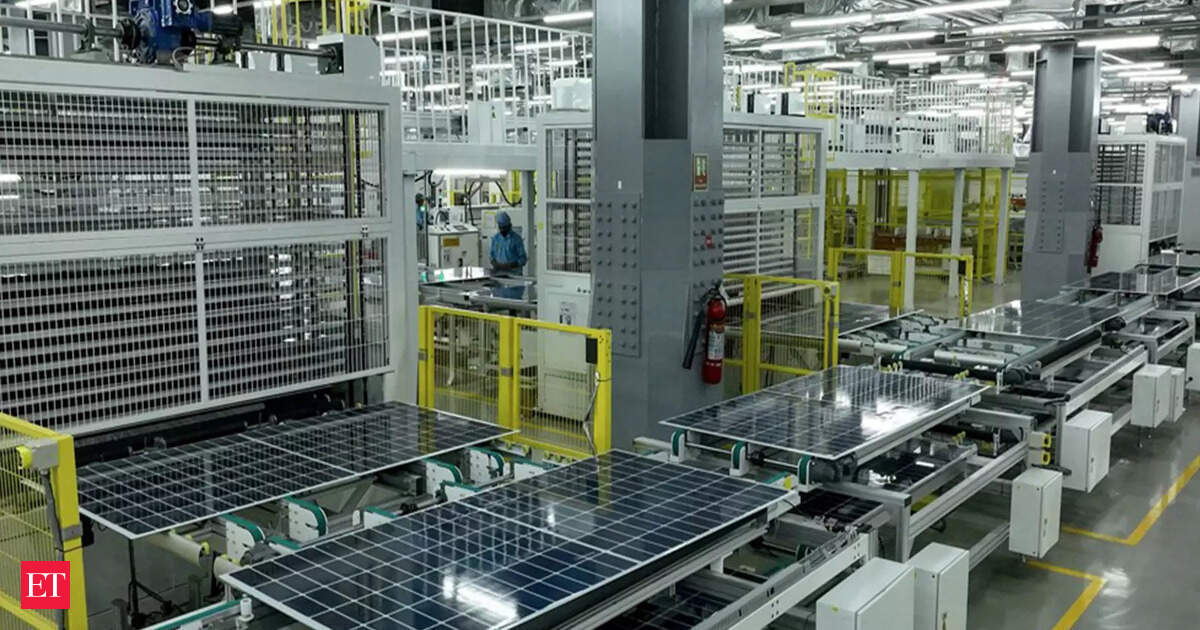Key Takeaways
- India’s solar module capacity has surged to nearly 100 GW, spurred by supportive policies.
- Critical risks include a mismatch in demand and off-take, alongside heavy reliance on Chinese inputs.
- Future export opportunities may hinge on changing international trade regulations, affecting domestic producers.
India’s Solar Sector at a Crossroads
According to a recent report by Yes Securities, India’s solar sector is at a crucial turning point, where factors like demand fluctuations, trade dynamics, and technological advancements will significantly impact which companies thrive and which struggle to survive. The report outlines that India’s module capacity has rapidly increased, reaching almost 100 GW, while its cell capacity has surpassed 25 GW, largely due to favorable policies such as the Production Linked Incentive (PLI) scheme, Basic Customs Duty (BCD) incentives, and a series of significant capital expenditure announcements.
Despite these advancements, the report emphasizes that mere scale does not mitigate the sector’s inherent risks. A primary concern is the mismatch between demand and supply, which could lead to tough market conditions. “The sector now sits at an inflection point where policy, input markets, demand signals, trade flows, and technology shifts will determine which players survive and who gets squeezed,” the report notes.
With India’s nameplate module capacity swiftly rising from the high teens to nearly 100 GW, projections indicate that planned enhancements could bring total capacity to approximately 160–170 GW by 2028. However, if there are slowdowns in domestic tenders, export opportunities, or rooftop solar installations, utilization rates might drop sharply, resulting in margin reduction. The report warns that oversupply is not just a theoretical scenario, as signs of inventory buildups and price pressures are already surfacing in China and other global markets.
Furthermore, India’s solar manufacturing heavily depends on Chinese sources for vital upstream materials such as polysilicon, wafers, and cells. Data from the International Energy Agency indicates that China holds over 80 percent of the market share in these areas, leaving Indian manufacturers vulnerable to raw material shortages, price volatility, and potential diplomatic or trade-related disruptions. For instance, while polysilicon prices fell sharply in 2024, they remain unpredictable, granting a structural edge to Chinese competitors.
In recent years, Indian solar module exports, particularly to the US, have seen significant growth. Nevertheless, the report warns that this export demand is closely tied to shifting external trade regulations, including the Inflation Reduction Act (IRA) in the US and various anti-dumping measures in Southeast Asia. Any sudden modifications in tariffs or trade rulings could jeopardize these export prospects, resulting in excess capacity for domestic producers and diminished profit margins.
As the solar sector grapples with these challenges, stakeholders will need to navigate a complex landscape of opportunities and risks. Adapting to these changes will be vital for ensuring long-term sustainability and profitability in India’s ever-evolving solar market.
The content above is a summary. For more details, see the source article.















